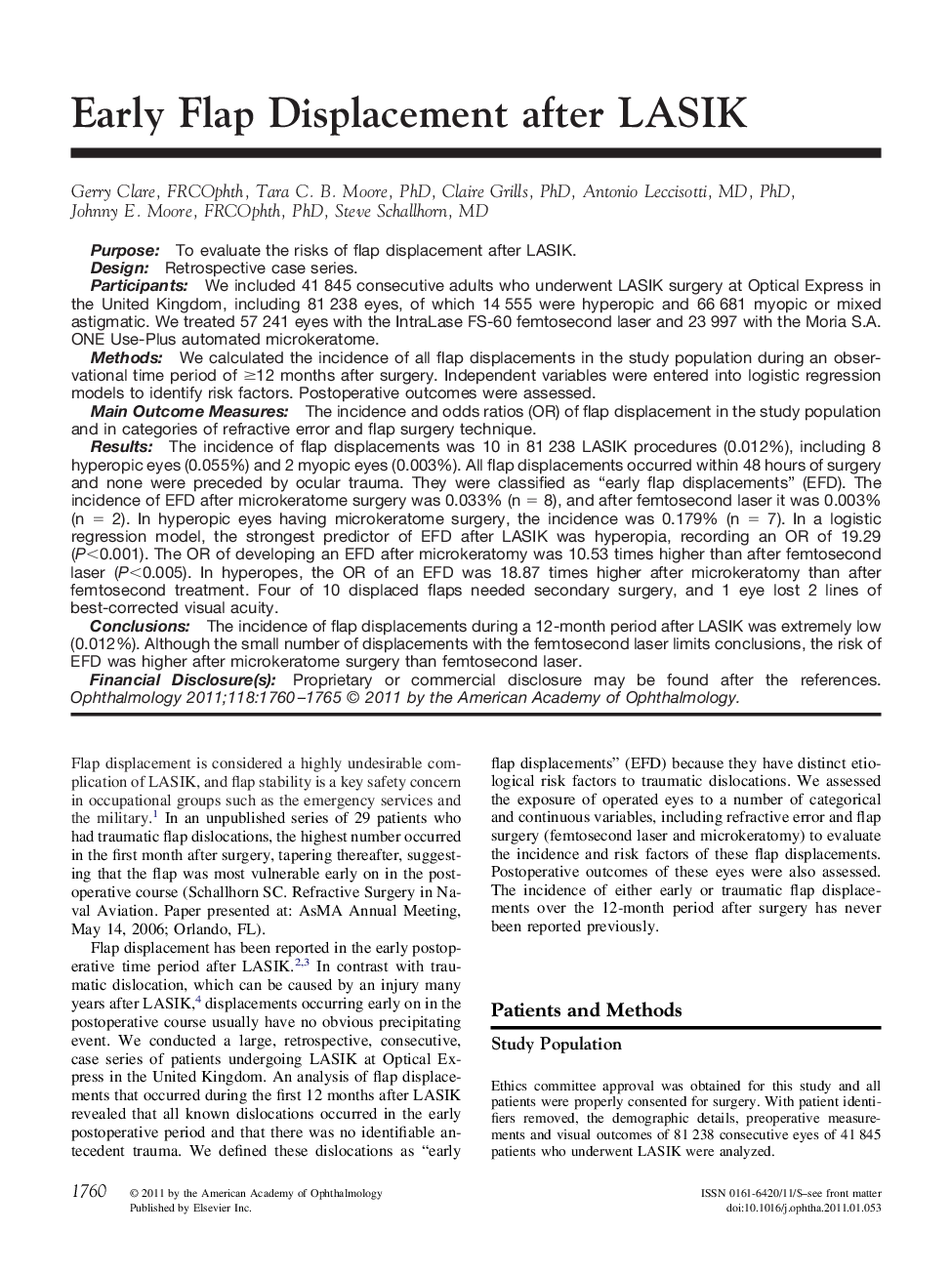| کد مقاله | کد نشریه | سال انتشار | مقاله انگلیسی | نسخه تمام متن |
|---|---|---|---|---|
| 4027773 | 1262463 | 2011 | 6 صفحه PDF | دانلود رایگان |

PurposeTo evaluate the risks of flap displacement after LASIK.DesignRetrospective case series.ParticipantsWe included 41 845 consecutive adults who underwent LASIK surgery at Optical Express in the United Kingdom, including 81 238 eyes, of which 14 555 were hyperopic and 66 681 myopic or mixed astigmatic. We treated 57 241 eyes with the IntraLase FS-60 femtosecond laser and 23 997 with the Moria S.A. ONE Use-Plus automated microkeratome.MethodsWe calculated the incidence of all flap displacements in the study population during an observational time period of ≥12 months after surgery. Independent variables were entered into logistic regression models to identify risk factors. Postoperative outcomes were assessed.Main Outcome MeasuresThe incidence and odds ratios (OR) of flap displacement in the study population and in categories of refractive error and flap surgery technique.ResultsThe incidence of flap displacements was 10 in 81 238 LASIK procedures (0.012%), including 8 hyperopic eyes (0.055%) and 2 myopic eyes (0.003%). All flap displacements occurred within 48 hours of surgery and none were preceded by ocular trauma. They were classified as “early flap displacements” (EFD). The incidence of EFD after microkeratome surgery was 0.033% (n = 8), and after femtosecond laser it was 0.003% (n = 2). In hyperopic eyes having microkeratome surgery, the incidence was 0.179% (n = 7). In a logistic regression model, the strongest predictor of EFD after LASIK was hyperopia, recording an OR of 19.29 (P<0.001). The OR of developing an EFD after microkeratomy was 10.53 times higher than after femtosecond laser (P<0.005). In hyperopes, the OR of an EFD was 18.87 times higher after microkeratomy than after femtosecond treatment. Four of 10 displaced flaps needed secondary surgery, and 1 eye lost 2 lines of best-corrected visual acuity.ConclusionsThe incidence of flap displacements during a 12-month period after LASIK was extremely low (0.012%). Although the small number of displacements with the femtosecond laser limits conclusions, the risk of EFD was higher after microkeratome surgery than femtosecond laser.Financial Disclosure(s)Proprietary or commercial disclosure may be found after the references.
Journal: Ophthalmology - Volume 118, Issue 9, September 2011, Pages 1760–1765